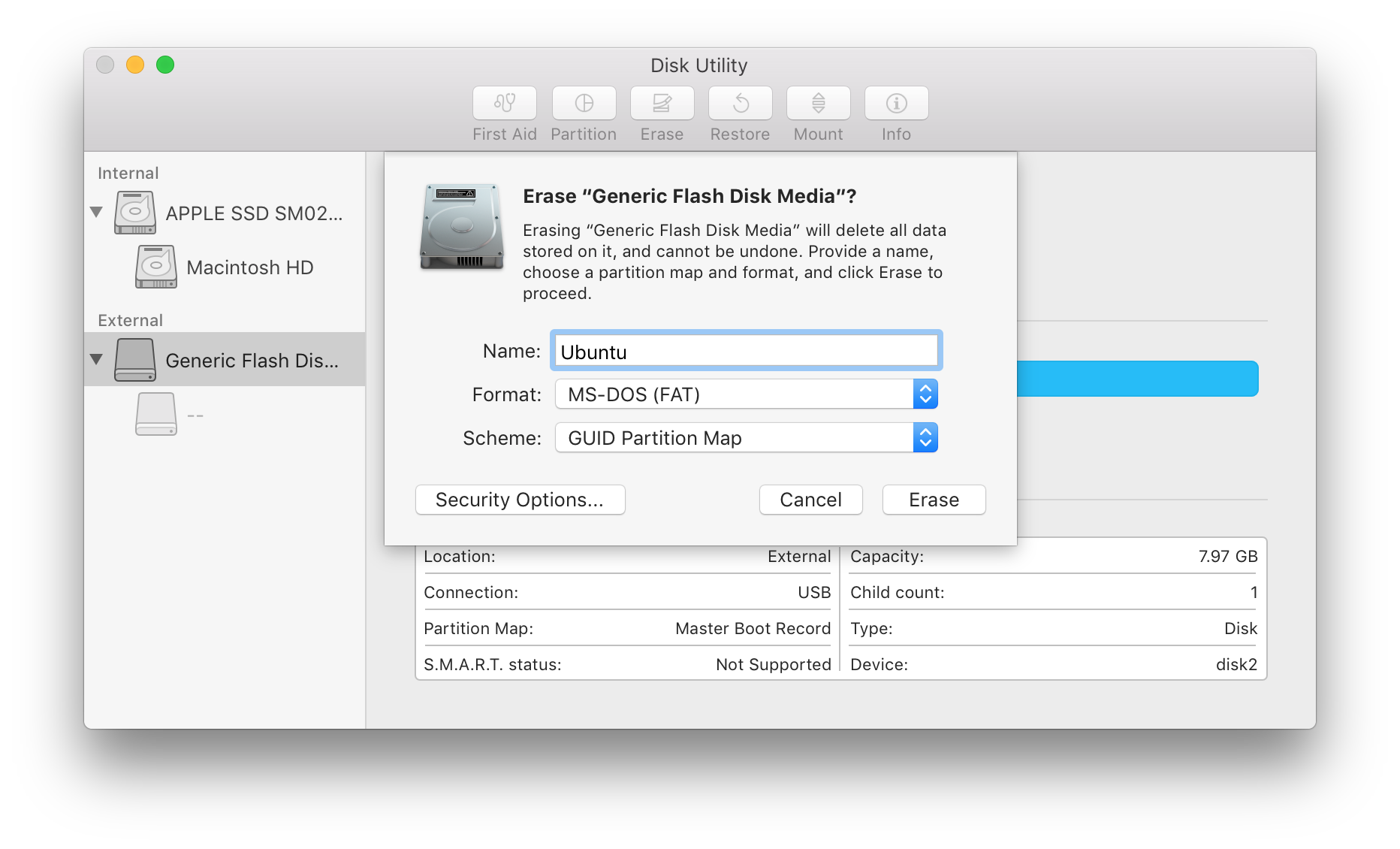
- #Partition format for booting mac usb how to
- #Partition format for booting mac usb mac os
- #Partition format for booting mac usb install
- #Partition format for booting mac usb upgrade
#Partition format for booting mac usb install
Now you can boot up from your newly bootable disk and either Install OSX10.9 on another device or use the Terminal/Disk Utility or Firmware Password Utilities on another device. Remove the existing Packages alias link from the newly restored image rm /Volumes/OS\ X\ Base\ System/System/Installation/PackagesĬopy the full OSX Mavericks Packages over to the new image….takes a while cp -R /Volumes/OS\ X\ Install\ ESD/Packages/ /Volumes/OS\ X\ Base\ System/System/Installation/PackagesĪnd there it is! – to eject the new bootable USB OSX Mavericks 10.9 disk ‘cd’ to home and eject cd ~/ hdiutil eject /Volumes/OS\ X\ Base\ System/ This will change ‘ BootDisk‘ to ‘ OS X Base System‘

Click here to download the Windows Media Creation Tool from Microsoft's official website and save it on your computer. Make sure the USB flash drive is connected to your computer.
#Partition format for booting mac usb how to
This puts you back in the Finder in front of the newly mounted InstallESD.dmg, go back to Terminal and clone the BaseSystem.dmg to the remote USB drive sudo asr restore -source /Volumes/OS\ X\ Install\ ESD/BaseSystem.dmg -target /Volumes/BootDisk/ -erase -noverify Now, let’s see how to create a Windows 10 UEFI USB via Windows Media Creation Tool. Swap to the newly mounted image cd /Volumes/InstallESD.dmg Mount the InstallESD.dmg buried deep in the app hdiutil attach /Applications/Install\ OS\ X\ Mavericks.app/Contents/SharedSupport/InstallESD.dmg -noverify Just for the crazy ones……after Mavericks is downloaded….and again this assumes you external disk is named BootDisk

With an average computer, this takes less than 5min to complete.If you want all to return back to normal and hide the system files run a couple more commands in the Terminal defaults write AppleShowAllFiles FALSE killall Finder How to create the OSX 10.9 Mavericks Bootable Drive just via Terminal The command will not show any progress until it’s done, but you can press control+t for status updates. To create a partition on a flash drive without formatting / erasing existing data, you can use Macs inbuilt Disk Utility feature. 8m (MegaBytes) has consistently worked well for my uses. There is a science to the ideal block size, but I don’t know it. dd copies data in blocks rather than on a file by file basis (this is why it’s so fast) and this command gives you the option to set how big each block is. The specific path for external drives is in “/dev”, hence /dev/disk2 “of” stands for “output file” (a.k.a the destination file or location). iso into the terminal and it will auto-fill this file path. In MacOS, if you have a finder window open, you can drag and drop the. One thing you need took care of that the USB drive needs in GPT partition in order to work on a Mac computer otherwise it won’t boot.
#Partition format for booting mac usb mac os
“if” stands for input file (a.k.a the source file or location). Use your USB drive right-click on it and select format disk format this will format the USB drive so that it can be used to store the Mac OS operating system. “dd” is an extremely basic, but powerful block level copy command built into all Linux and Unix operating systems (MacOS is UNIX based) “sudo” tells the system to use root level (that is the system’s highest level) privileges to perform the following action. $ sudo dd if =/Users/kyle/Downloads/Linux.iso of =/dev/disk2 bs =8m In my case, the actual command I used to erase the USB disk is Only the primary part of the identifier (i.e.
#Partition format for booting mac usb upgrade
In this instance, I’ve just labelled the volume as “Test”. With a bootable Ubuntu USB stick, you can: Install or upgrade Ubuntu, even on a Mac Test out the Ubuntu desktop experience without touching your PC. This simply refers to the name of the volume that will be created. Journaled HFS+ Mac OS Extended (Journaled) When specifying a personality as a parameter to a verb, case is not considered.Ĭertain common aliases (also case-insensitive) are listed below as well.Ĭase-sensitive APFS APFS (Case-sensitive)Ĭase-sensitive HFS+ Mac OS Extended (Case-sensitive)Ĭase-sensitive Journaled HFS+ Mac OS Extended (Case-sensitive, Journaled)

These file system personalities can be used for erasing and partitioning.


 0 kommentar(er)
0 kommentar(er)
